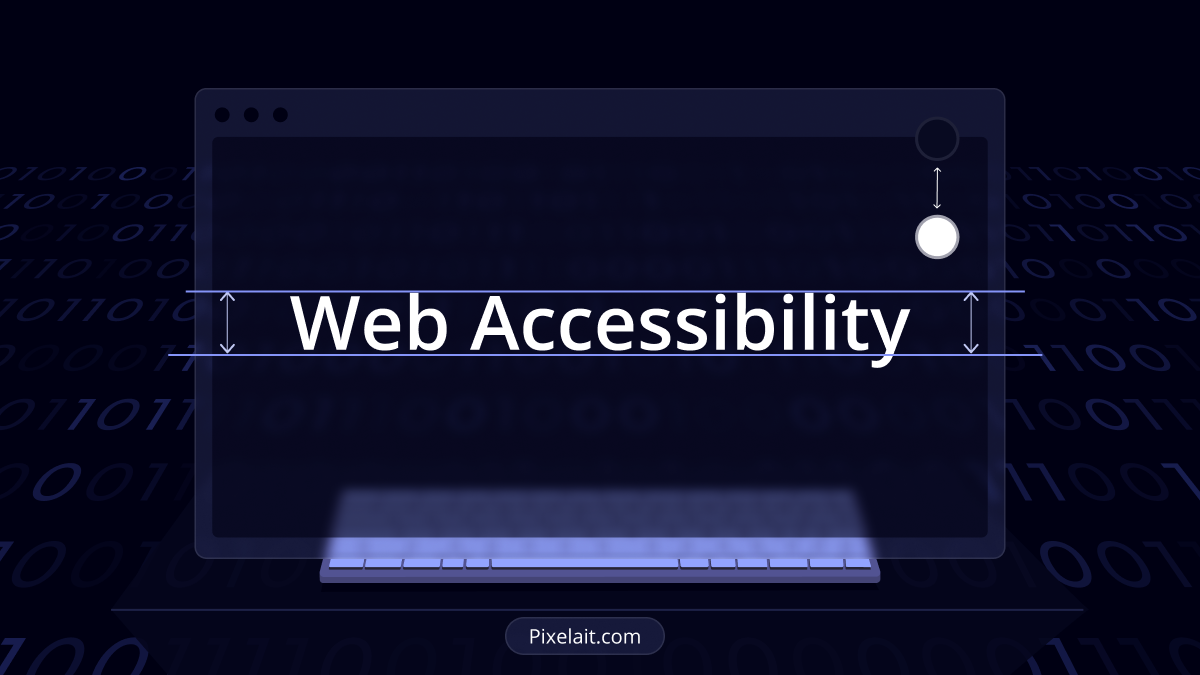
Introduction
“How to Enhance Your Website’s Accessibility Using AI” is more than a kind act; it’s essential today. Over a billion people have disabilities worldwide, making website inclusivity critical. AI, with its adaptive and learning technologies, caters to diverse needs. This guide delves into how AI aids in enhancing website accessibility. We focus on easy navigation, clear understanding, and usability for everyone.
1. Understanding Website Accessibility
Before looking into AI solutions, it’s key to know what website accessibility is. It means building websites and apps that people with disabilities can use just as easily as anyone else. This includes all kinds of content like text, images, audio, and video, and takes into account different disabilities, including visual, auditory, physical, speech, cognitive, and neurological. Moreover, the role of typography, as explored in ‘Typography in UI: Mastering the Art of Readability‘, is crucial in ensuring that website content is not only accessible but also readable for all users, including those with visual impairments.
2. The Role of AI in Web Accessibility
AI is special because it can automate, enhance, and tailor the web experience. Let’s explore how AI can significantly improve web accessibility:
Automated Accessibility Audits
- AI-powered tools can crawl your website, identifying barriers that might hinder accessibility. These tools analyze content against established guidelines like the Web Content Accessibility Guidelines (WCAG) and offer actionable insights to rectify issues.
Personalization with Machine Learning
- Machine learning algorithms can instantly adjust a website to meet each user’s needs. For example, AI can change text size, contrast, and how you navigate the site, based on what users do and prefer. In addition to AI, the choice between Adaptive vs. Responsive Design: Tailoring UI for Every Device can also impact accessibility, ensuring that all users have a seamless experience regardless of their device.
3. Natural Language Processing for Assistive Tools
- AI-driven natural language processing (NLP) technologies enable voice navigation and control, making websites more accessible to users with physical disabilities and those who prefer voice commands over traditional input methods.
4. Image and Video Recognition:
- AI can automatically create descriptive text for images and accurate captions for videos. This helps users with visual or hearing challenges access and understand all types of content.
5. Strategies to Enhance Web Accessibility with AI
a. Implement AI-Powered Chatbots
Integrate AI chatbots that can understand and respond to user queries in natural language, providing an interactive and inclusive experience for users with cognitive disabilities.
b. Utilize Predictive Text and Content Suggestions
Leverage AI to offer predictive text and content suggestions, aiding users with mobility impairments by reducing the amount of typing required.
c. Offer Voice-Activated Interfaces:
Employ voice recognition and speech synthesis technologies to facilitate navigation and control for users who find it challenging to use a mouse or keyboard.
d. Create Dynamic Content Adaptation:
Adopt AI systems that dynamically adjust content presentation based on user interaction patterns and preferences, ensuring a tailored experience for users with various disabilities.
e. Ensure Compliance with Accessibility Standards:
Use AI to continually monitor and update your website to comply with the latest accessibility standards and legal requirements, avoiding potential legal issues and enhancing user trust.
Conclusion:
The integration of AI into website accessibility is not just about adhering to standards but about embracing the diversity of your audience. By implementing the AI strategies discussed, you can create an inclusive digital space that welcomes all users, regardless of their abilities. Remember, an accessible website is not a final destination but an ongoing journey of improvement and adaptation.
